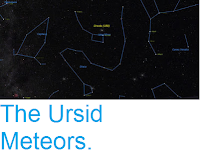The American Meteor Society has
received reports of a bright fireball meteor being seen over much of
the American Midwest slightly before 1.30 am local time (slightly before 7.30 GMT) on Monday 6 February 2017.
The fireball was seen across Illinois, Wisconsin, Michigan, Ohio, Iowa, Ontario, New York, Kentucky and Minnesota, though the majority of sightings came from Illinois and Wisconsin. A fireball is defined as a meteor
(shooting star) brighter than the
planet Venus. These are typically caused by pieces of rock burning up in
the atmosphere, but can be the result of man-made space-junk burning up
on re-entry. The meteor is described as having a greenish colour, which may indicate it had a high magnesium content. It passed from southwest to northeast, and is thought to have ended its journey somewhere over Lake Michigan (in this context 'ended its journey' means exploded due to friction induced heating; this typically happens high in the atmosphere, with smaller chunks of the object falling to Earth in relative darkness).
Dashcam images of the 6 February 2017 Midwest meteor. Lisle Police Department/American Meteor Society.
Objects of this size probably enter the Earth's atmosphere several times
a year, though unless they do so over populated areas they are unlikely
to be noticed. They are officially described as fireballs if they
produce a light brighter than the planet Venus. It is possible that this object will have produced meteorites that reached
the surface (an object visible in the sky is a meteor, a rock that falls
from the sky and can be physically held and examined is a meteorite).
Witness reports can help astronomers to understand these events. If you
witnessed this fireball you can report it to the American Meteor Society here.
See also...
Follow Sciency Thoughts on Facebook.







